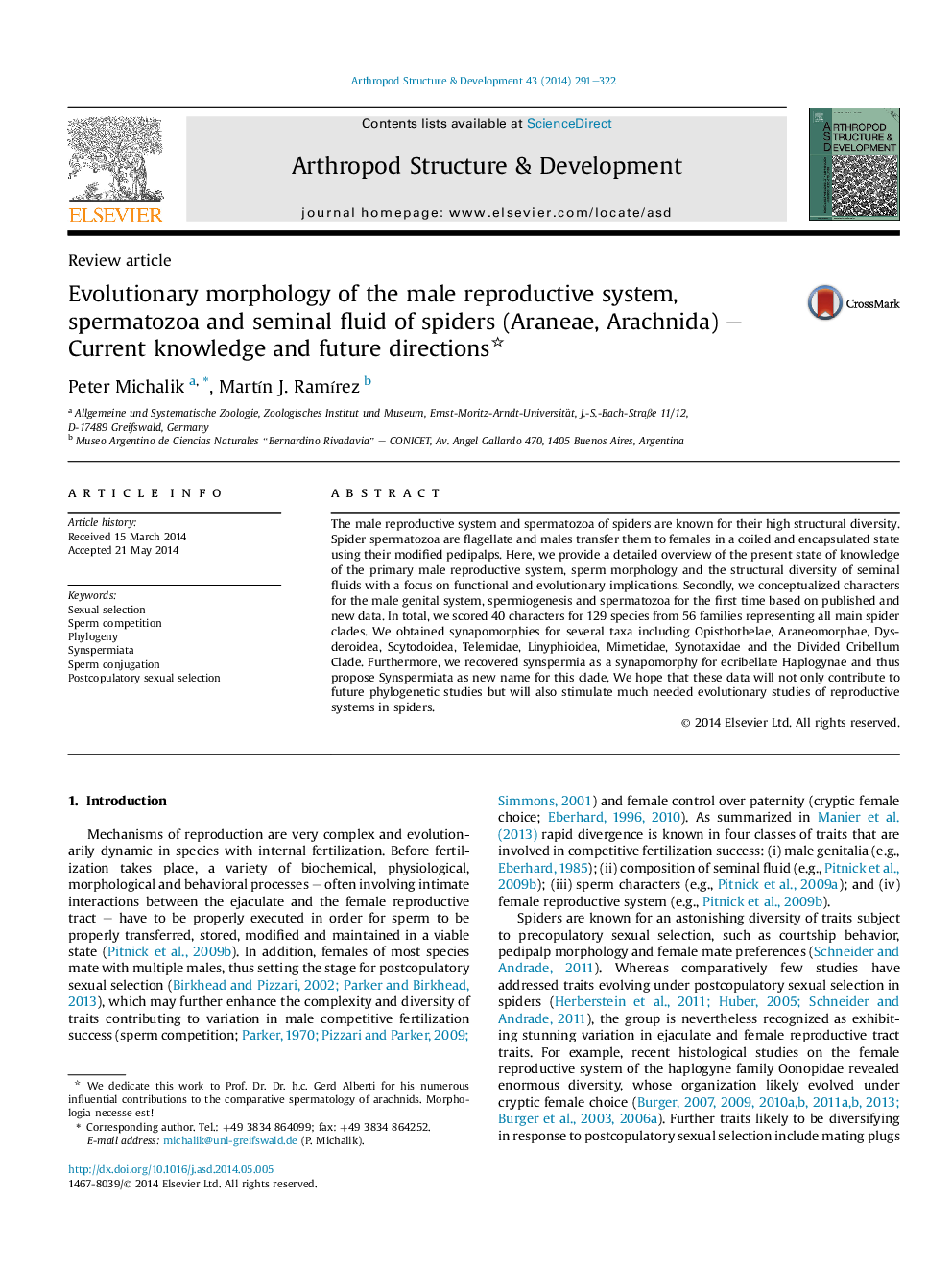| کد مقاله | کد نشریه | سال انتشار | مقاله انگلیسی | نسخه تمام متن |
|---|---|---|---|---|
| 5888711 | 1153149 | 2014 | 32 صفحه PDF | دانلود رایگان |

• Detailed review of the present knowledge of the male reproductive system and spermatozoa of spiders.
• Conceptualization of characters based on data from 154 species of 56 families representing all main spider clades.
• Detailed discussion on the evolutionary implications especially with regard to post-copulatory sexual selection.
The male reproductive system and spermatozoa of spiders are known for their high structural diversity. Spider spermatozoa are flagellate and males transfer them to females in a coiled and encapsulated state using their modified pedipalps. Here, we provide a detailed overview of the present state of knowledge of the primary male reproductive system, sperm morphology and the structural diversity of seminal fluids with a focus on functional and evolutionary implications. Secondly, we conceptualized characters for the male genital system, spermiogenesis and spermatozoa for the first time based on published and new data. In total, we scored 40 characters for 129 species from 56 families representing all main spider clades. We obtained synapomorphies for several taxa including Opisthothelae, Araneomorphae, Dysderoidea, Scytodoidea, Telemidae, Linyphioidea, Mimetidae, Synotaxidae and the Divided Cribellum Clade. Furthermore, we recovered synspermia as a synapomorphy for ecribellate Haplogynae and thus propose Synspermiata as new name for this clade. We hope that these data will not only contribute to future phylogenetic studies but will also stimulate much needed evolutionary studies of reproductive systems in spiders.
Journal: Arthropod Structure & Development - Volume 43, Issue 4, July 2014, Pages 291–322